Best thermal binoculars: Observe nocturnal wildlife after dark
Thermal imaging made simple — these binoculars detect heat sources with precision. Perfect for nature, surveillance and night exploration.
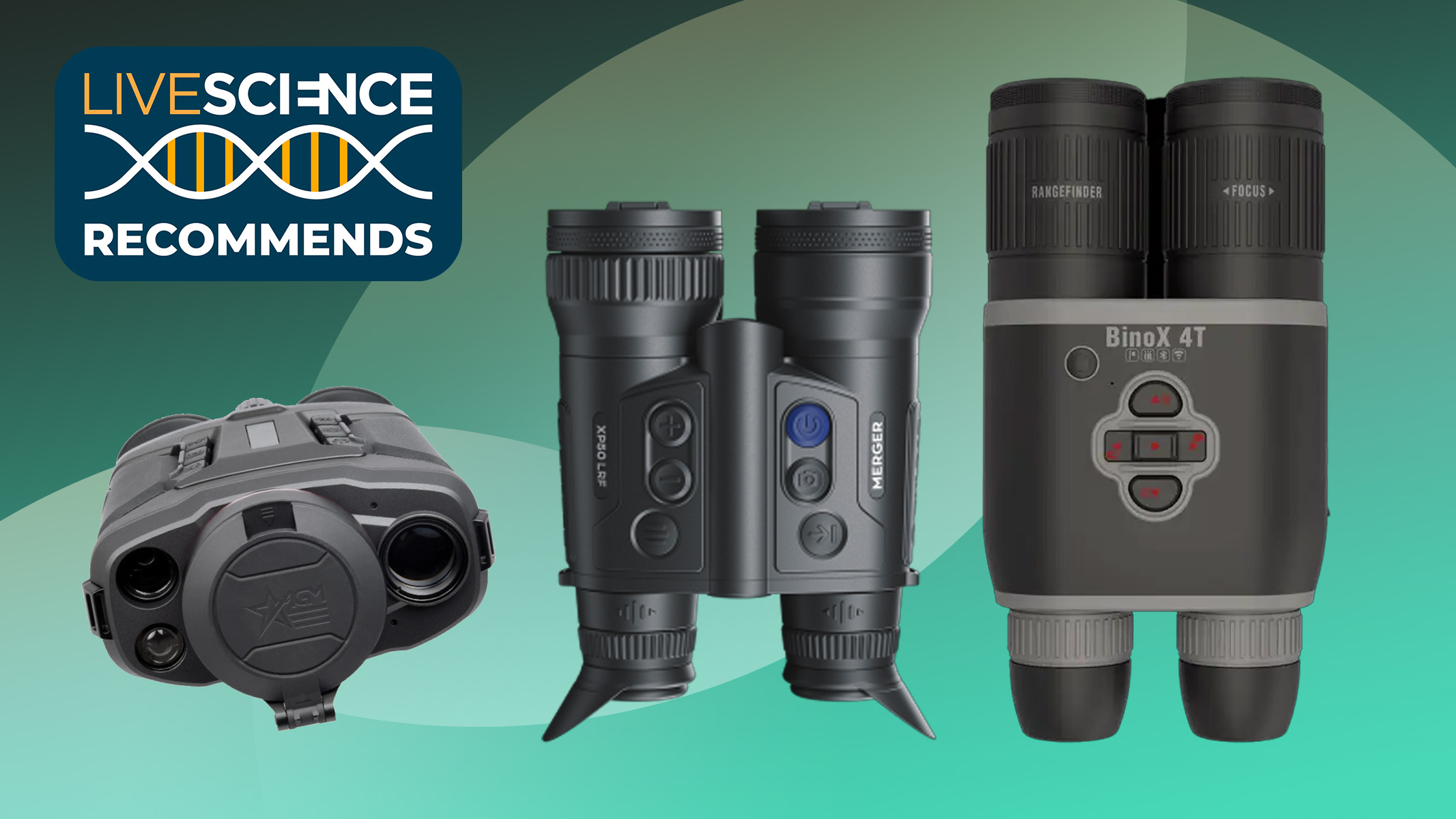
Thermal binoculars allow you to see wildlife (and humans) after dark by sensing the heat of their bodies. They differ from typical binoculars, which rely on light transmission into the eyepiece, but both types of binoculars can be very useful, particularly when birdwatching and nature-watching.
Two different types of technology allow you to see in the dark: night vision and thermal imaging. Night vision binoculars require a small amount of light in order to work, which is then amplified to allow us to see. Thermal imaging, on the other hand, detects heat, which is then displayed using color-coded imagery.
In this guide, we've compiled the best thermal imaging binoculars currently on the market to help you make the best investment. There's no denying that thermal binoculars are an expensive bit of kit — but great technology often is. The models we've listed in this guide range from around $1,500 to $4,999.
The quick list

Best overall
Allowing you to livestream your views straight to a smart device in real time, and with high-quality sensors for thermal and IR images, this binocular sets the standard for thermal imagery.
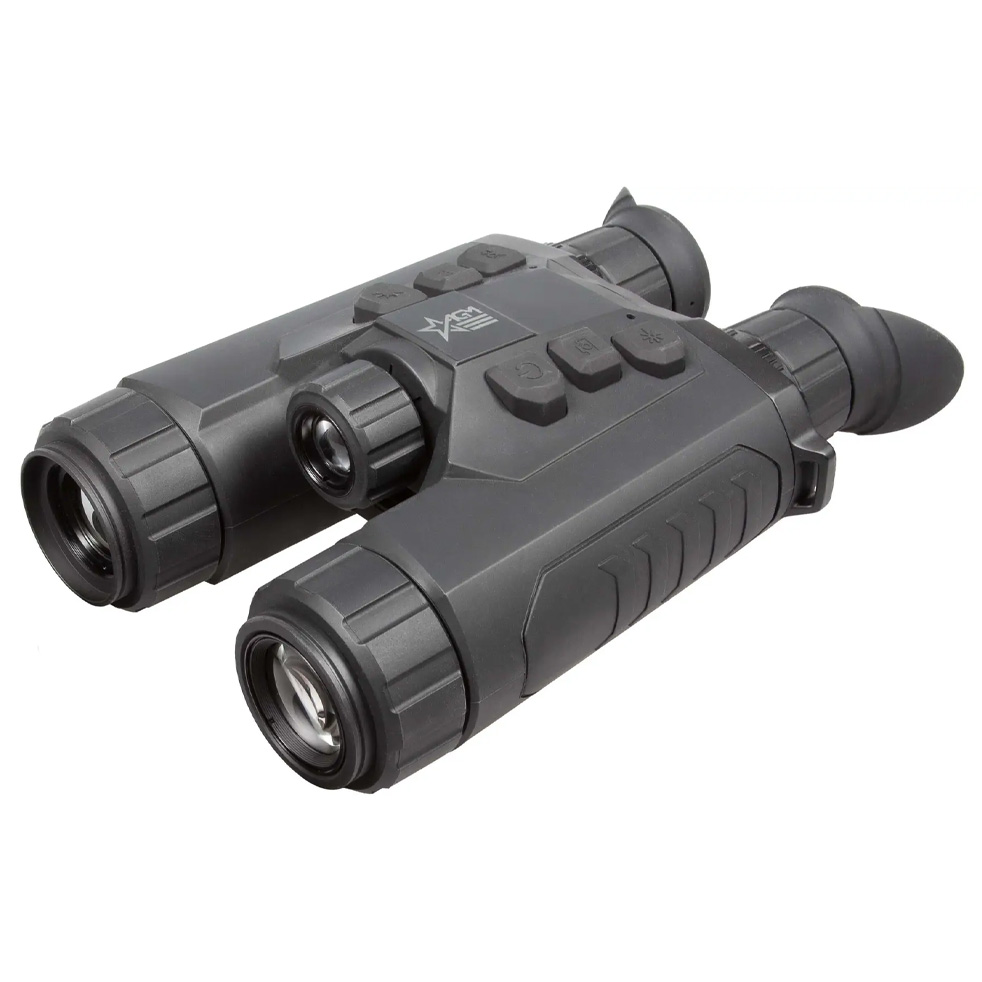
Best budget
With a high-sensitivity thermal detector, and a 4K ultra-low light CMOS sensor, the AGM ObservIR comes well equipped considering its low price.
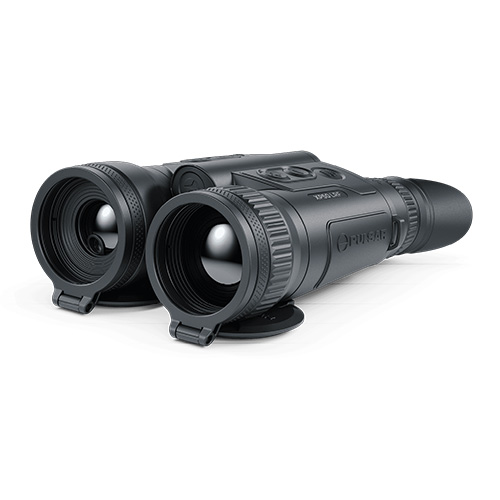
Best for all weather
With an IPX7 (waterproof) rating and tough, armored casing, these binos are ideal for all-weather use.
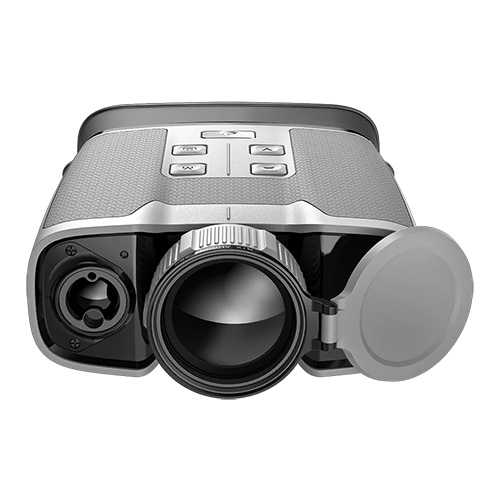
The best for imaging
This handheld thermal imager is engineered specifically for outdoor applications, prioritizing user observation comfort.
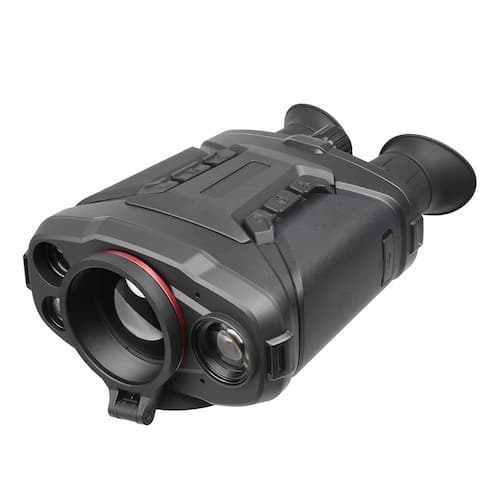
Best for long sessions
The AGM is light and compact, weighing just 2.5 pounds, making it comfortable to use even for long periods.

Best for GPS
With its GPS, wireless and Bluetooth capabilities, the Guide Sensmart TN650 LRF is fully equipped to use while out on location.
The best thermal imaging binoculars we recommend in 2025
Why you can trust Live Science
The best thermal binoculars overall
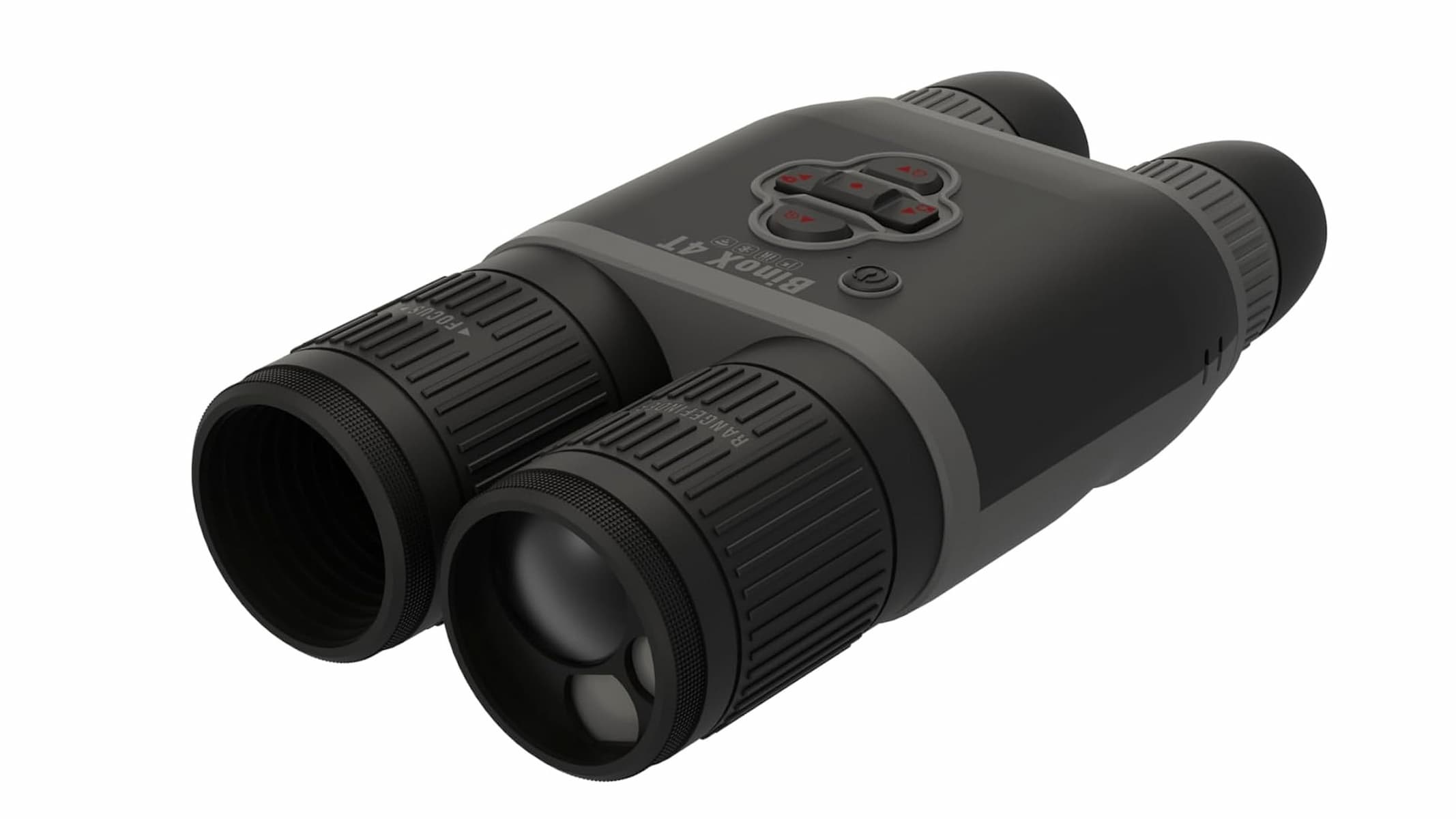
ATN BinoX 4T
Our expert review:
Specifications
Reasons to buy
Reasons to avoid
✅ You want top-quality Gen 4 thermal sensor technology: You'll struggle to find a better sensor elsewhere.
✅ You want app support: The ATN BinoX 4T are app-ready and capable of livestreaming.
❌ You're on a budget: These are very expensive binoculars, so they're not going to be for everyone. Consider the AGM Global Vision ObservIR CMOS 5.5-22x25mm binos instead.
❌ You want multispectral ability: The ATN Binox 4T are not multispectral.
🔎 ATN BinoX 4T: The ATN 4T range is a solid all-round performer. It has multiple sensors and an app enabling real-time observation on any smart device. ★★★★½
The BinoX 4T 384 1.25- 5x Thermal Binocular with Laser Rangefinder combines advanced thermal imaging technology with precise distance measurement capabilities. This optic excels in detecting thermal signatures in complete darkness, or in adverse conditions such as dust and fog, rendering images on a 1280 x 720 display for each eyepiece. Users can select from black hot, white hot or color palettes to suit their viewing preferences.
With an impressive maximum detection range of 2,250 feet (686 meters), recognition range of 1,000 feet (306 m) and identification capabilities up to 675 feet (206 m), the BinoX 4T ensures superior performance in diverse environments.
Additionally, it features a built-in infrared illuminator, for the benefit of users equipped with conventional night vision gear, and the integrated laser rangefinder accurately measures distances from 5.5 to 1,000 yards (5 to 914 m) with a resolution of 1 meter.
The BinoX 4T offers still image capability for capturing visuals and can record 1280 x 960 video at 60 fps, with storage options via a user-supplied MicroSD card (4 to 64GB).
Furthermore, it allows for simultaneous video recording and streaming over Wi-Fi to iOS or Android devices using the ATN app, enhancing the functionality and versatility of this sophisticated thermal binocular system.
Attributes | Notes |
|---|---|
Design | Weather resistant. |
Performance | App-based live streaming. |
Functionality | Good all-rounder. |
The best budget thermal binoculars
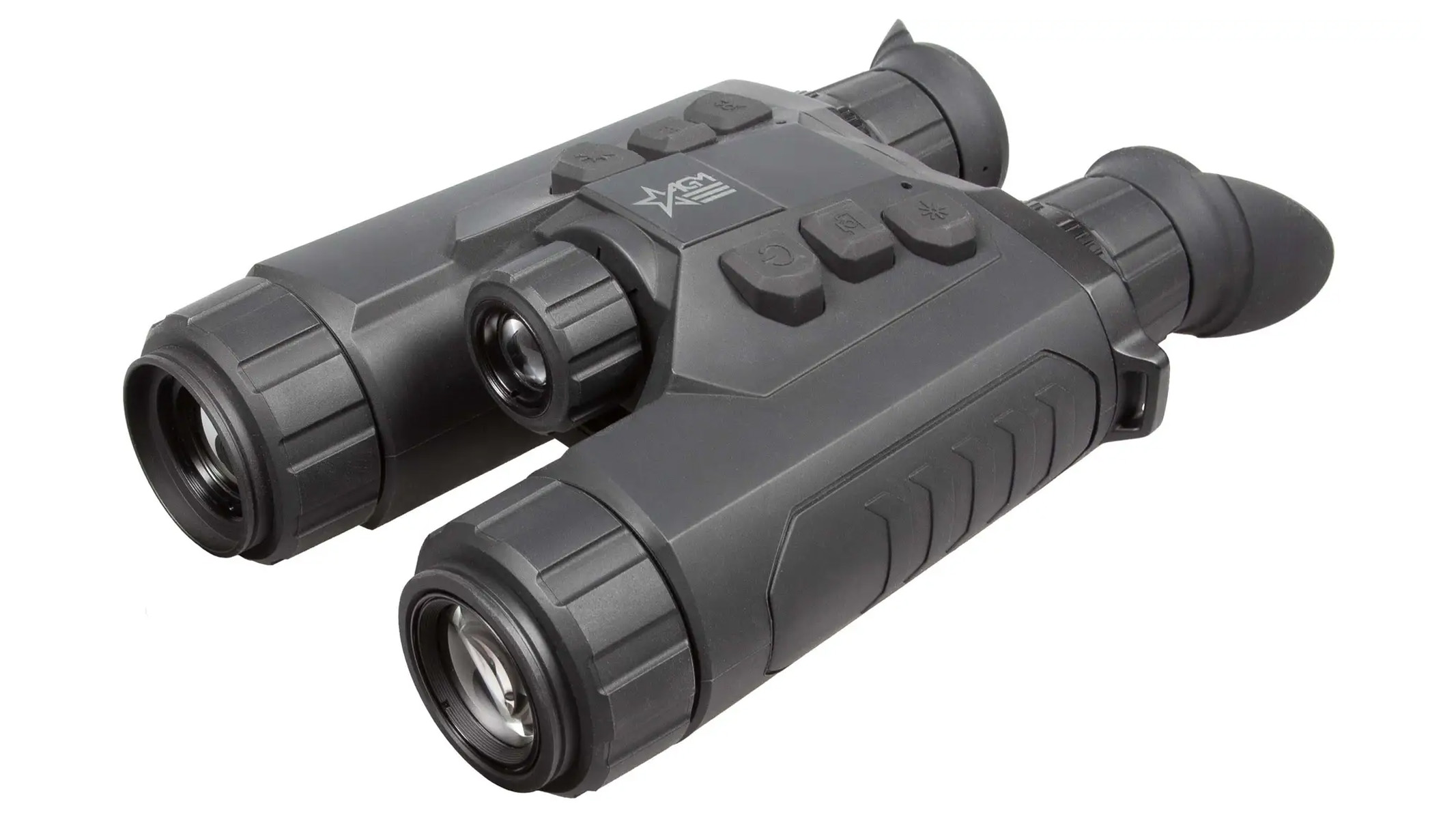
AGM Global Vision ObservIR CMOS 5.5-22x25mm
Our expert review:
Specifications
Reasons to buy
Reasons to avoid
✅ You're on a limited budget: Despite their price, these binoculars pack in all the features you'd expect of a more premium-priced set.
✅ You want dual spectrum thermal binoculars: These are dual spectrum.
❌ You want a premium build: The casing feels slightly budget compared to more expensive binoculars.
🔎 AGM Global Vision ObservIR CMOS 5.5-22x25mm: This is a fully-featured thermal binocular at a really low price. It's well worth a look, particularly if you're on a budget. ★★★★
The AGM Global Vision ObservIR LRF is an advanced thermal and digital day/night vision binocular that integrates both a thermal imaging channel and a digital day/night imaging channel. This dual capability enhances visibility across a range of environmental conditions. While it offers commendable performance and user-friendly operation, it is important to consider that the image resolution and housing construction may not match the quality standards of higher-end models.
The AGM Global Vision ObservIR LRF is a good choice because it has a nice balance of features, performance and price. Some users might think the image quality and the materials of the device could be better, but it works well and is easy to use. It’s a popular option for anyone looking for a thermal and digital binocular that can do many things. These features include a 12 micron high-sensitivity thermal sensor,1x, 2x and 4x digital zoom, and a dual-spectrum thermal and digital day/night system.
The AGM Global Vision ObservIR LRF has digital image processing technology, which merges the optical input with the thermal sensor, enabling it to produce very clear images even in very poor light. It has an ultra-low illumination optical channel and a built-in IR illuminator, further enhancing its low-light capability.
It needs four batteries to make it work, but you do get up to eight hours of use, and four rechargeable batteries are included in the price.
Attributes | Notes |
|---|---|
Design | Cheap-feeling outer casing. |
Performance | Waterproof rating of IP67. |
Functionality | Good features for the price. |
Best thermal binoculars for all weather
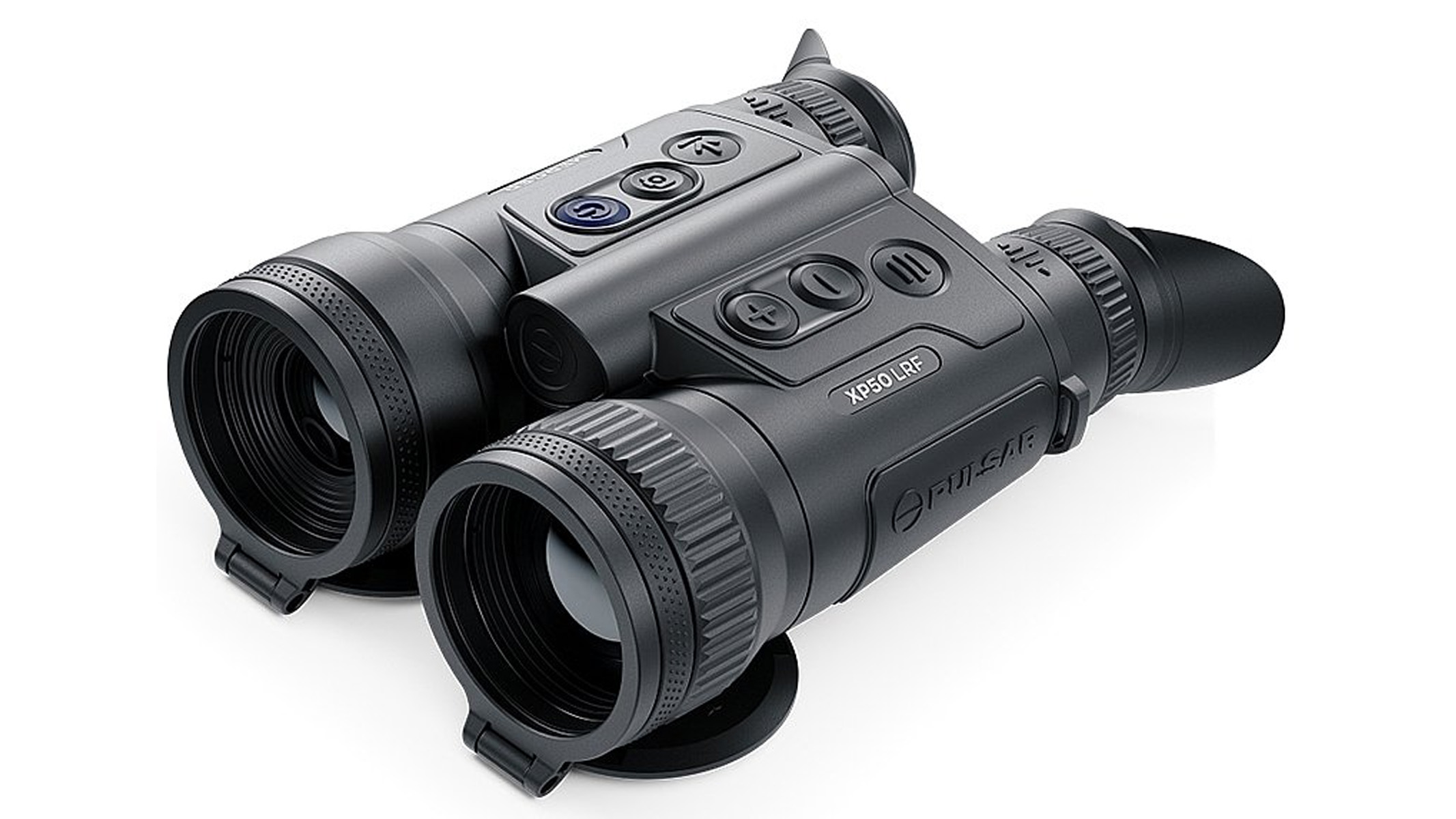
Pulsar Merger XP50 LRF
Our expert review:
Specifications
Reasons to buy
Reasons to avoid
✅ You want to be able to use them in all weather: These binoculars are fully weather-proof, allowing you to use them in rain, fog and more.
✅ You want high thermal sensitivity: The thermal sensor here is state-of-the-art.
❌ You're on a budget: These are very expensive. Take a look at the AGM Global Vision ObservIR CMOS 5.5-22x25mm instead.
❌ You want multispectral ability: These are not multispectral.
🔎 Pulsar Merger XP50 LRF: The Pulsar Merger is fully waterproof and has extremely sensitive thermal sensor technology, making it an interesting option for tough but accurate thermal imagery. ★★★★
The Pulsar Merger XP50 LRF has an IPX7 rating, meaning it can be immersed in 1m of water for up to 30 minutes. This should be enough to protect the unit even in the harshest conditions. It has an extremely tough-looking outer casing, and the whole unit feels good quality.
The control panel is designed to be very user-friendly, making it easy to reach and operate while holding the device. For some features, you will need to use both hands. The laser rangefinder works well: on clear days or when aimed at bright surfaces like white walls, it can easily measure distances beyond 0.6 miles (1 kilometer). Even outdoors, bright surfaces can help you measure distances, especially when the objects you’re trying to measure are too dark for the laser to work effectively.
The performance characteristics of its imaging optics significantly impact a thermal imager's capability to detect subtle thermal radiation levels. The Merger LRF (F50/1.0) thermal imager achieves optimal detection efficiency thanks to its fast lens paired with a highly sensitive thermal sensor. This combination ensures that users obtain superior quality. Imagery with high detail and contrast that delivers informative visuals consistently, regardless of challenging weather conditions like rain or fog, where temperature differentials in the observed environment are minimal.
A high-sensitivity sensor with a noise equivalent temperature difference (NETD) of less than 25 mK can detect minimal temperature variations, making it effective in low temperature-contrast conditions and during rainy or foggy weather. With a resolution of 640 x 480 pixels, this sensor provides reliable target identification. It allows for high-quality visualization of crucial anatomical features of animals and captures minute details of the surrounding landscape.
Attributes | Notes |
|---|---|
Design | Fully waterproof. |
Performance | High sensor sensitivity. |
Functionality | Good performance in poor weather. |
Best thermal binoculars for imaging
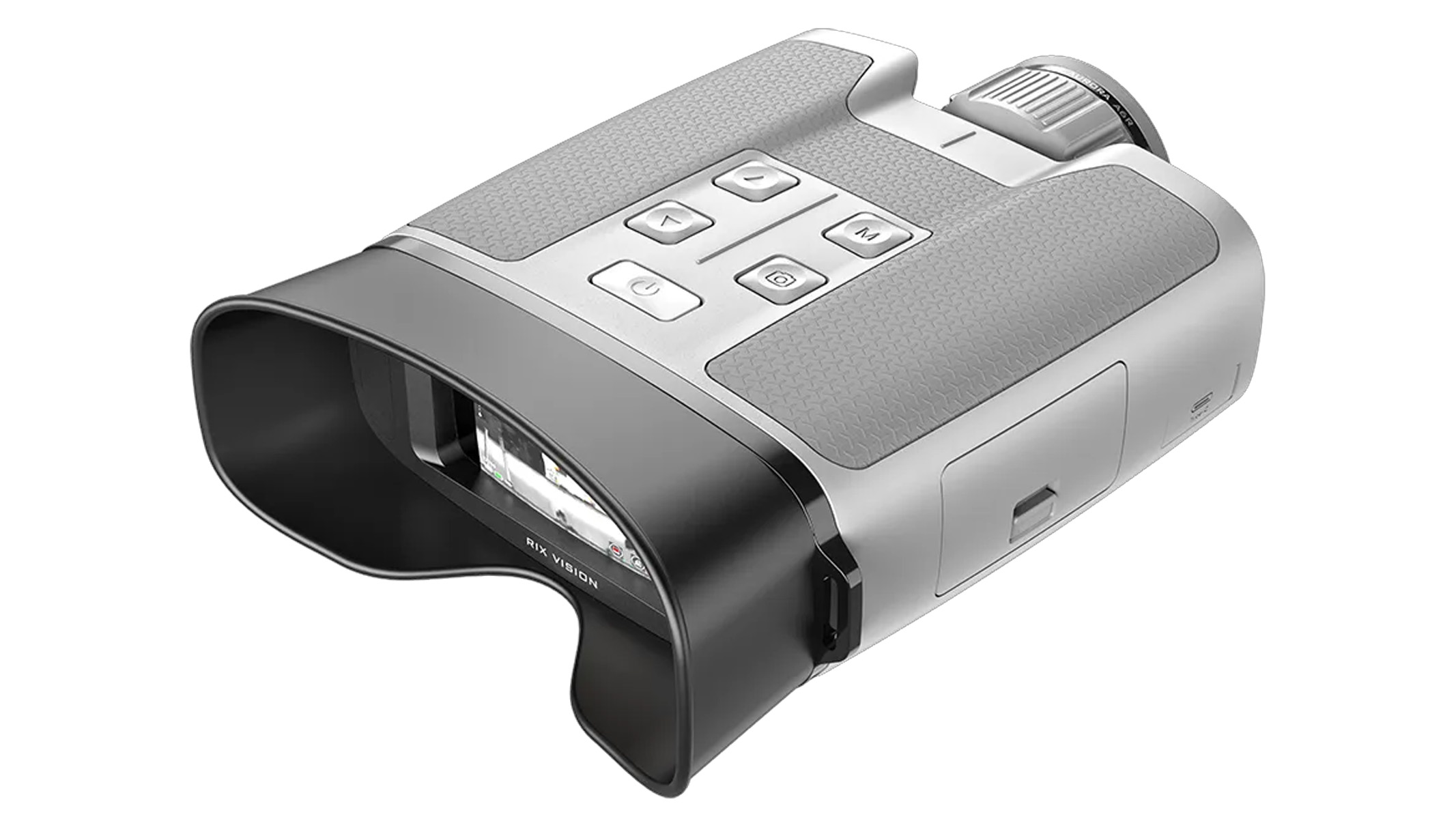
RIX AURORA A6R
Our expert review:
Specifications
Reasons to buy
Reasons to avoid
✅ You want great image quality: The advanced thermal detectors allow for excellent image clarity.
✅ You want a large screen display: The 2.69-inch OLED display screen is excellent.
❌ You need high magnification: You can't magnify any higher than 13.6x here.
🔎 RIX AURORA A6R: With its large screen, the AURORA A6R is extremely easy to use and comfortable on the eye over long sessions. ★★★★
These thermal binoculars truly stand out in their performance and features. The large, high-definition display provides excellent visibility, making it easy to navigate through various environments even in low-light conditions. The user-friendly controls are intuitive and straightforward, allowing for quick adjustments without fumbling through complicated menus. Controls are well spaced and can easily be found in the dark. The body is coated in a plastic armour which is textured, aiding grip in wet conditions.
One of the standout features is the range of imaging modes. Whether you’re observing in complete darkness, fog or varying weather conditions, these different modes prove invaluable, enhancing clarity and depth perception. With a robust battery life, you can use the device for approximately 20 hours on a full charge, powered by eight AA batteries.
The resolution offers good quality for the price point, although the zoom feature is most effective for distances exceeding 500 yards (460 m). It allows for detailed viewing at longer ranges, making it ideal for scouting or wildlife observation. The accompanying accessories, particularly the carrying bag, are high-quality and thoughtfully designed, adding significant value to the overall package.
In summary, these thermal binoculars are a remarkably capable option for both casual users and enthusiasts, combining convenience, durability and functionality at a competitive price.
The sensor boasts a resolution of 384 x 288, which complements the 2.7-inch (68 mm) OLED display effectively. This combination delivers exceptionally clear imagery, enhancing the overall visual performance.
All in all, a very competent performer with its big screen and capable video recording and storage. If you're after the ability to record your wildlife observations and then review what you've seen without the use of another device, then the RIX Aurora A6R thermal imager is a good investment.
Attributes | Notes |
|---|---|
Design | Lightweight with a large screen. |
Performance | Low range of magnification. |
Functionality | Easy to use and control in the dark. |
The best thermal binoculars for long sessions

AGM Voyage LRF TB50-640
Our expert review:
Specifications
Reasons to buy
Reasons to avoid
✅ You want to take advantage of the dual-spectrum capability: This binocular is dual-spectrum.
✅ You want to take video recordings: The Voyage LRF TB50-640 allows you to capture your observations.
❌ You're on a strict budget: This is another very expensive set of thermal binoculars. Our budget option, the AGM Global Vision ObservIR CMOS 5.5-22x25mm, is worth considering instead.
🔎 AGM Voyage LRF TB50-640: The AGM comes feature-packed with its ability to digitally fuse thermal and digital night vision. ★★★★
The ability to fuse the two image sensors on the AGM will prove useful in terms of the device's long-term usability. This feature means that the image portrayed is a digital mix of the two sensors, increasing clarity and detail. This increase in detail makes for less squinting while trying to determine your views through the unit, making it easier to use.
Here are just some of the features of the AGM: High-sensitivity sub-20mK thermal detector, 50 mm Germanium lens with a 0.9 aperture, 2,560 x 1,440 ultra-low light CMOS sensor, various viewing modes including fusion imaging and multiple color palettes, 3.5x base magnification with 16x digital zoom, picture-in-picture mode, built-in laser rangefinder, GPS module, inclination sensor, Digital Detail Enhancement (DDE), up to eight hours of battery life on three removable, rechargeable 18650 batteries, a USB Type-C port for external power capabilities, IP67 waterproof rating, included hard carrying case, neck strap and of course AGM’s five-year transferable warranty.
The main feature of this binocular is its advanced thermal viewing system, which includes a cutting-edge thermal sensor. This sensor is highly sensitive, allowing it to detect heat signatures, such as those of people, from as far away as 1.6 miles (2.6 km). Even at closer distances, it provides clear and detailed images of the surroundings, including trees and other background objects.
What sets the Voyage binoculars apart is that they also have a digital night vision feature. This helps users identify targets more clearly after the thermal sensor has spotted them. Additionally, the built-in laser rangefinder can measure distances up to 1,093 yards (1,000 m), enhancing the binoculars' overall functionality.
All of these features, combined with the AGM's 2.5 pound (1.12 kg) weight, make it a good buy if you intend to conduct long nighttime observation sessions.
Attributes | Notes |
|---|---|
Design | Dual-spectrum image fusion. |
Functionality | High thermal sensitivity of sub-20 mK. |
Performance | Can be used for extended periods due to features that are easy on the eye. |
The best thermal binoculars for GPS
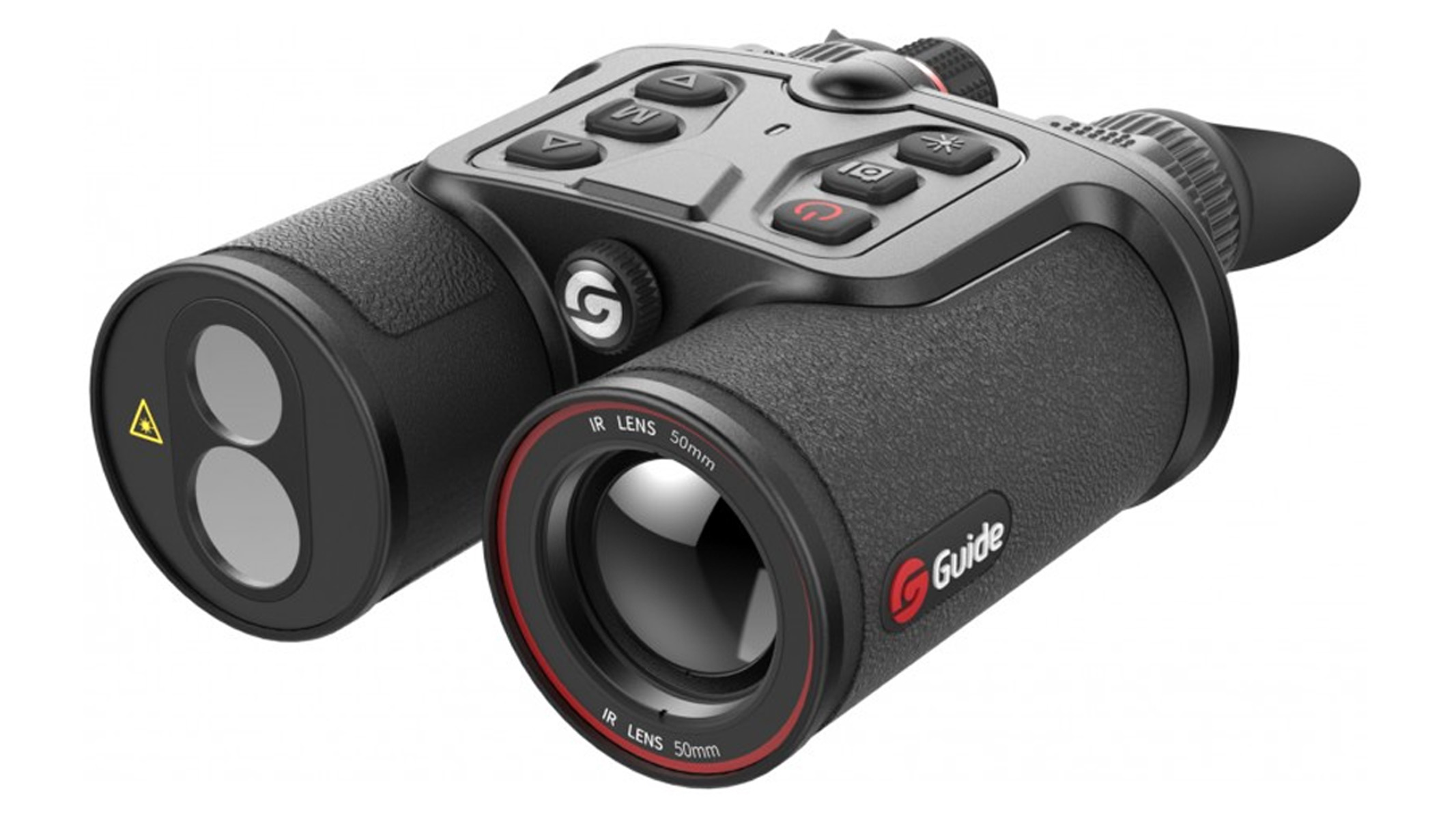
Guide Sensmart TN650 LRF
Our expert review:
Specifications
Reasons to buy
Reasons to avoid
✅ You want great image quality: This has a full color AMOLED HD display, so your images look fantastic.
✅ You want connectivity: These binos have wireless, Bluetooth and GPS built in.
❌ You want clear images at high magnification: The quality of images degrades as you increase the magnification.
🔎 Guide Sensmart TN650 LRF: This is a good, highly featured optic with GPS and wireless capabilities. ★★★★
If you want to be able to observe nature at night and record both what you see and accurate location data, then the Guide Sensmart TN650 LRF could fit the bill.
The Guide TN Series binoculars are not just for looking; they come packed with features that enhance your outdoor experience. Along with clear viewing, these binoculars have built-in GPS, can measure distances with a laser and will even let you take photos and videos of what you're seeing.
One great thing about the Guide TN Series binoculars is their easy-to-use design. They have raised buttons that you can easily feel, making them convenient to use even in the dark. Plus, they're tough enough to handle the rain, so you won't have to worry about damaging them while you’re out exploring. You can focus entirely on enjoying your surroundings!
With an impressive field of view measuring 8.78 × 6.59 degrees, this device delivers outstanding observation capabilities, allowing users to capture a wide panoramic view of their surroundings. The 50 Hz frame rate enhances the experience by providing smooth, detailed thermal imagery, ensuring clarity even when observing moving objects.
For those moments requiring closer examination of a target, the TN650 boasts a robust base magnification of 2.8x, complemented by a versatile digital zoom range from 1x to 8x. Additionally, the eyepieces offer an extraordinary zoom capability, reaching up to 13.8x, making it easier than ever to focus on fine details with precision and accuracy.
Connect the Guide TN650 to the TargetIR app to use a smartphone or tablet as a second screen, offering a live view straight to your mobile device. The app provides comprehensive control over various digital functions, enabling users to manage and customize settings effortlessly. Additionally, it offers the convenience of remote recording and the capability to capture high-quality still images. Users can seamlessly view, store and share photos or videos taken with the device, enhancing their experience.
Attributes | Notes |
|---|---|
Design | Waterproof and drop-resistant. |
Performance | Very sensitive thermal image sensor. |
Functionality | GPS and wireless capability. |
Best thermal binoculars: comparison
Product type | Magnification | Thermal sensor | Multispectral | Objective lens | Range | Weight | Dimensions (in) |
|---|---|---|---|---|---|---|---|
ATN Binox 4T | 1.25x to 5x | Gen 4 384 x 288, 60 Hz | No | 19mm | 5-1,000 yards | 2.5lbs | 9.4 x 5 x 2.6 |
Pulsar Merger LRF XP50 | 2.5x to 20x (8x digital) | 640 x 480 pixels | No | F50/F1.0 | Up to 1,970 yards detection range | 1.98lbs | 7.7 x 5.6 x 2.9 |
AGM Voyage LRF TB50-640 | 3.5x to 56x | Vanadium Oxide Uncooled Focal Plane Array | Dual | 50mm | Up to 2,800 yards | 2.5lbs | 8.5 x 6.1 x 3.5 |
Guide Sensmart TN650 LRF | 2.8x | Uncooled VOx Infrared Detector, 8 to 14 μm | Dual | 50mm | 1,530 yards | 1.93lbs | 6.3 x 5.7 x 2.7 |
AGM Global Vision ObservIR CMOS 5.5-22x25mm | 5.5x to 22x | 12 micron high-sensitivity thermal sensor | Dual | 25mm | 1,310 yards | 1.96lbs | 8.7 x 5.6 x 2.8 |
RIX Aurora A6R Thermal Imaging Binoculars | 3.4x to 13.6x (1x to 4x digital) | VOx Uncooled | No | 50mm | 5.5 to 1,312 yards | 2lbs | 7.9 x 5.9 x 2.4 |
Best thermal binoculars: Frequently Asked Questions
What are the best thermal binoculars?
In our opinion, based on our extensive testing, the ATN BINOX 4T 384x288 1.25- 5x smart HD thermal binoculars are currently the ones to beat.
Are thermal binoculars worth it?
With the improvements in technology and the advent of dual-spectrum capability, thermal binoculars are definitely something to be considered, especially if you want to observe subjects in the dark.
What should I look for in thermal binoculars?
Is the thermal device equipped with an expansive screen that boasts a high display resolution, allowing for effective upscaling of thermal images? Does the display feature a rapid refresh rate for smoother visuals? Is the thermal unit designed with a replaceable battery for extended usability?
Is night vision or thermal better?
More and more, we are seeing these two technologies merging into one unit. The difference is that thermal binoculars can see in complete darkness, whereas night vision relies on amplifying existing light.
Can thermal binoculars see through trees?
No, but if an animal or target is behind a tree, it wouldn't take long for the thermal to pick up the heat source as the animal moves around the trunk.
What is the cheapest thermal binocular?
We have chosen the AGM Global Vision ObservIR CMOS 5.5-22x25mm as the best budget thermal binocular. The technology in these binoculars is not cheap, so you'll struggle to find a pair that are truly budget-friendly and still work as well as intended.
Do thermal binoculars work in the day time?
Yes, most thermal binoculars should still work as intended during daylight hours. They work by picking up on heat rather than light, so it doesn't matter if it's light or dark.
Can thermal binoculars see through walls?
No, thermal binoculars can't see through walls or other solid structures. However, if there are heat sources within the walls, such as pipes with hot or cold water flow, they'll likely be able to pick up on that.
Do I need high magnification on thermal binoculars?
High magnification will allow you to see farther, so the magnification you need will depend on your intended use. Even low magnification thermal binoculars will allow you to see heat signatures, but they are best for close-range viewing.
What are the best waterproof thermal binoculars?
We think the best waterproof thermal binocular is the Pulsar Merger XP50 LRF. These binoculars are IPX7 rated so can be immersed in up to 1m of water. They're also hard-wearing and protected against other weather conditions.
Latest updates
July 29, 2025: Running order reorganized.
How we test the best thermal binoculars

We test all of our optics by taking them into the field in all weathers and in day and night. We also unbox and examine the body and features to make a concise record of these things.
Each pair of binoculars is carefully tested by either our expert staff or knowledgeable freelance contributors who know their subject areas in depth. This ensures our reviews are backed up by personal, hands-on experience with each binocular, and that each pair is judged based on its particular price point, product class and intended use.
We look at how easy they are to operate, whether eye relief can be adjusted for spectacle wearers, whether a binocular comes with appropriate accessories or carry bags, and also make suggestions if a particular set of binoculars would benefit from any additional kit to give you the best viewing experience possible.
Get the world’s most fascinating discoveries delivered straight to your inbox.

Matt Morris is a keen astronomer, wildlife watcher and photographer living in Somerset, UK. He started stargazing and birdwatching at the age of 10 with his father who took him to bird hides and nature reserves around England. This sparked his interest in cameras and optics, a passion that has now spanned the better part of four decades and led to his being featured in several national photography magazines for competition-winning photos. Matt has had deteriorating eyesight in one eye over the last few years due to being Type-1 Diabetic. This has led him to develop a special interest in optics, spurring his passion for bird watching and wildlife spotting.


